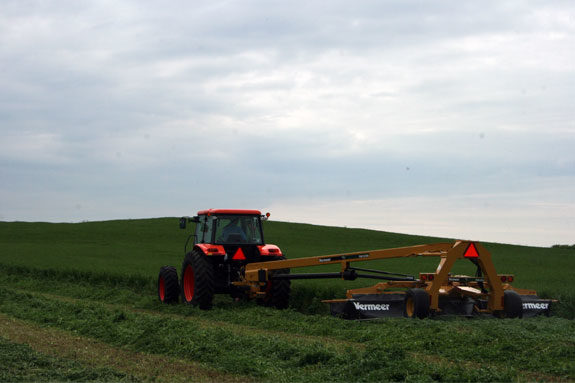Just as tractors aren’t what they used to be, the custom harvester business has grown more complex. The four gears on the old tractor kept in the corner of the machine shed aren’t enough to meet the needs of your business today.
- Be in this business because you like it.
- Be mechanically minded. Relying on repair shops can be costly.
- Know how to work with people.
- Understand what your customers’ needs are and your important role to fulfill them.
- Know how to price your services.
- Understand the balance sheet. If you want to get the attention of a lender, enter the meeting with a current balance, the last three years' income, an expense report, and projections for next year.
- Understand cash-flows-depreciation. Realize how long your equipment really is going to last.
- Understand cash-flow projections. “If you are not savvy about this stuff, get some help from your accountant or someone in the family,” Sipiorski recommended.
- Know how to talk to your lender.
- Buying and financing the right equipment.
- Picking and knowing your customers. The key word here is “picking.” You have choices of whom you want to deal with, he said. Work with people who are going to work with you and pay you when the job is done.
- Roundtable meeting. Sit down with the dairyman, nutritionist, crop specialist, etc.
- Set a plan with your customers.
- Signed agreements. It’s great if you can do with a handshake, but one nice thing about written agreements is that there is no misunderstanding. You don’t have to have an attorney draw it up. It can be a simple one page. It just helps you understand what you’re going to pay for things, what you’re going to do and what the producer is expected to do.
- Collect the money that you have out there.
- Overdrive – Educate yourself by attending meetings and networking.
What are the key areas you consider important?
- Relationship with customer
- Communication
- Honesty
- Never promise the impossible
- Quality of work/efficiency
- Timing of the crop harvest
- Quality of crop and processing
- Cost of equipment
- Types of storage/bunker density
- Size of the operation
- Distance to travel
- Being paid on a timely basis
How do you communicate with your customers?
- Phone conversations
- Face-to-face communication
- Yearly meetings
- Early spring contact and Christmas card
- Spring meeting to discuss pricing, then weekly in summer and fall
- Communicate year-round about previous services, areas of improvement and future needs
- Flyer and e-mail
- Payment is due when job is complete
- 2 percent discount when payment is received in 10 days after job is completed
- Extra discount if paid in 10 days
- Bill is sent out a week or two after the job is complete
- Net 30 days; 1.5 percent interest after that
- Customers make monthly payments with 11 months to completely pay (This is a good way to get money back from dairy producers, Sipiorski said, but be sure the method works with your business structure too.)
- Customer receives a bill every 15 days
- Send out invoices when bill is past due, send statements a couple of times a year
- No work if more that 180 days past due (If you haven’t gotten paid from last year yet, don’t you dare drive back on the property again this year, he warned.)
- Trust that they will pay
- Expensive
- 1/3 more
- Loss of feed quality
- Wasted labor
- There is a time component, but equipment damage is a fear
- Schedule changes – unhappy customers or lost customers that can’t wait
- Talk about it and agree
- Customer’s farm responsibility
The last two items go together, Sipiorski said. Perhaps a written agreement that, if the customer pushes you to work in mud and you break something because of it, they will pay for the repairs.
Click here for a list of what the 12 operators charge for their custom hire work.
What kind of a return do you expect?
Responses ranged from 7 to 33 percent
Sipiorski questioned if that was a return on assets or net profit. He also wanted to know if that amount was enough. He challenged all harvesters to know what their return was and if it was enough for them.
Historically, a return has been 8 percent, but for some that’s not enough. Others settle at 4 percent, while it seems some are just happy to do what they do and breakeven, he said.
The survey was a means to get harvesters thinking about what they are going to do this next year to truly harvest the "green" stuff.
If you rely on a lender, or your customer relies on a lender, you need to have good discussions with them, Sipiorski said. The lending world has changed and he suggested having something in writing with your customer’s lender that says you are going to get paid for your work.
"If you have customers that are on the rocks, you may need something that is more than verbal. You can’t afford to eat that when you do all the work," he said.
One option is a standby letter of credit, obtained from the farm’s bank or farm credit system, that says when this work is done you’re going to get paid. It is dated and if you are not paid by that date, you take it to the bank.
A harvester’s lien is another option, but Sipiorski said you would have a harder time collecting on it because you can’t get paid until something is sold.
An attorney can further help you with those options if you have questions.
"We are living in a volatile world of pricing and things will change," Sipiorski said. "You need to price things correctly. You need to stay in business."














